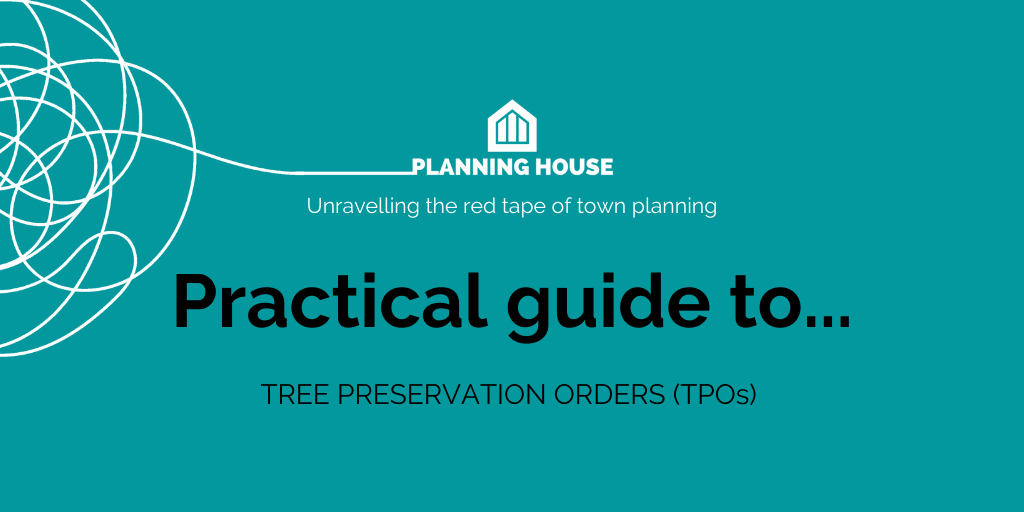What is a Tree Preservation Order?
Tree Preservation Orders (or TPOs) are placed upon trees that have been assessed and identified as having ‘amenity value’. They are put into place by councils and can protect either a single tree or a group of trees on land within their authority.
Trees can also be protected by virtue of the tree being situated on land which is classified as a Conservation Area, or a planning condition for its protection is attached to a planning permission.
I Own a Protected Tree – What Does it Mean for me?
If a tree on your land is protected by a Tree Preservation Order, according to the Schedule to the Town and Country Planning (Tree Preservation) (England) Regulations 2012, you must not (without permission from your local planning authority):
- Cut the tree down
- Top, loop or uproot the tree
- Wilfully damage the tree
- Wilfully destroy the tree
- Cut roots from the tree
Similarly, if your tree is protected by another method then you will need to apply to your local planning authority to carry out any works.
Are all Tree Preservation Orders the Same?
No – there are actually 4 types of Tree Preservation Order:
- Individual – for a single tree
- Group – for a group of specified individual trees
- Area – covers every tree within a particular area at the time of the order being made
- Woodland – covers all trees within a woodland area (regardless of age)
What if I Need to Work on a Tree Covered by a Tree Preservation Order?
The good news is that owning a tree subject to a Tree Preservation Order doesn’t mean you can never work on it – you just need to apply for permission from your local planning authority 8 weeks in advance. However be aware a local planning authority can refuse to grant you consent to carry out the works.
If a tree is posing a health and safety risk or is dead/dying and you require to carry out work on or remove it, you may be exempt from the ‘normal’ requirement to seek you local planning authority’s consent – however in these cases different requirements may apply.
What Should I Include in an Application to Work on a Protected Tree?
If you would like to carry out work on a protected tree, you can get hold of an application form from your local planning authority or the Planning Portal website. Within your application, you should include:
- Your completed application form
- A clear plan identifying the tree you wish to work on
- A clear description of the work to be carried out on the tree
- Your reasons for applying to carry out work
- Information on any health and safety issues or property damage caused by the tree
Can I Appeal?
Yes – if the local planning authority has not provided a decision within 8 weeks of your application or refuses your application, you can appeal to the Secretary of State, but you only have 28 days to submit your appeal.
What if I Apply for Planning Permission That Will Involve Felling a Protected Tree?
Planning permissions automatically override TPOs, as the TPO will be taken into consideration when your local planning authority decides whether to grant planning permission.
If planning permission is granted and the plans explicitly involve carrying out work to remove a protected tree, it can be assumed that the TPO will no longer stand.
What if I Carry out Works to a Protected Tree without Consent?
Carrying our works to a Tree Protection Order tree without the relevant consent is an offence and can end up in the landowner being fined, under Section 210 of the Town and Country Planning Act 1990. If convicted in the magistrates’ court, there can be a fine of up to £20,000. In serious cases a person may be committed for trial in the Crown Court and, if convicted, is liable to an unlimited fine.
It’s strongly recommended that before any works to trees confirmation is sought from your local planning authority to confirm if the tree is protected.
Related Content:
If you would like to apply to carry out work on a protected tree, a town planner can guide you through the application process, ensuring the local planning authority has all the necessary information to provide a timely decision. Take a look at our blog on When to Hire a Town Planning Consultant.
However, works to a protected tree are in the generally straightforward and if you have a good Arborist (Tree Surgeon) you shouldn’t need a Town Planning Consultant. The Aboricultural Association provides information on choosing your Tree Surgeon.


